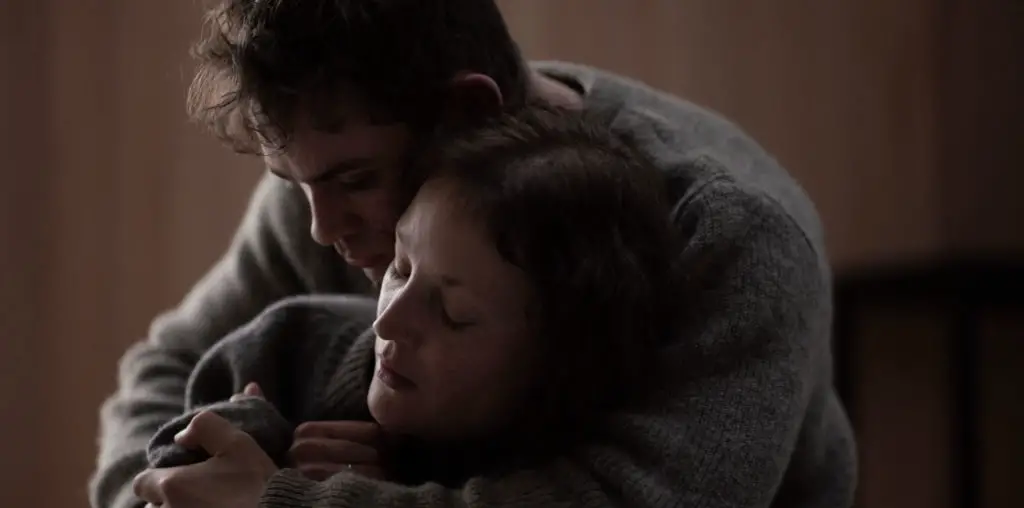
BOOTLEG FILES 333: “1001 Arabian Nights” (1959 animated feature film starring Mr. Magoo).
LAST SEEN: The film was broadcast on Turner Classic Movies in March 2009.
AMERICAN HOME VIDEO: A VHS video was released in 1997, but there has been no DVD release.
REASON FOR BOOTLEG STATUS: The film has been out of circulation for many years.
CHANCES OF SEEING A COMMERCIAL DVD RELEASE: It will turn up eventually.
When I was a kid, I was a huge fan of the Mr. Magoo cartoons. In many ways, they represented the ultimate in anti-social entertainment – the figure of fun at the center of the mayhem was a cantankerous, near-sighted old man who growled and flat-footed his way into a wild series of catastrophes. With a larger-than-life voice performance by Jim Backus, Magoo’s sputtering zaniness was an explosion of energy that happily demeaned the elderly and the visually impaired.
In today’s politically correct era, these cartoons are kept off television due to perceived insensitivity. But in a less sophisticated era, Mr. Magoo’s antics delighted audiences – and two cartoons featuring the character won Academy Awards.
Mr. Magoo was the breakthrough character for United Productions of America (UPA), an independent animation studio that was created in the late 1940s. It stood out from the competition via style and substance: it specialized in a stylized animation coupled with a hipster sense of humor and a music score skewered to jazzy beats. The success of the Mr. Magoo cartoons (which were theatrically released through Columbia Pictures) enabled UPA to expand its output, and some of its most notable endeavors included the now-classic shorts “Gerald McBoing Boing” (based on a Dr. Seuss story) and a highly artistic version of “The Tell-Tale Heart” narrated by James Mason.
But by the late 1950s, the market for animated shorts began to evaporate. UPA was eager to expand into feature-length films and drew up a number of ambitious potential projects, including an animated version of the Broadway musical “Finian’s Rainbow” and a version of “Don Quixote” with a screenplay by Aldous Huxley. Ultimately, it settled into a version of “Arabian Nights” that would feature Mr. Magoo.
From a business perspective, UPA’s decision was a huge gamble. Walt Disney ran the only Hollywood studio that regularly produced feature-length animated films, and Uncle Walt spent many years on the brink of insolvency before he hit his stride. Outside of two Fleischer Studios productions – “Gulliver’s Travels” (1939) and “Mr. Bug Goes To Town” (1941) – no U.S. film company dared to take on Disney in this field. (A number of European animated features were released in the postwar years, but none of them made any impact with U.S. audiences.)
From an artistic perspective, UPA was also gambling with the goodwill generated by Mr. Magoo. The character was able to entertain people in one-reel shorts, but there was no guarantee that he could maintain a full-length film. Even Disney recognized the challenge of centering a feature film on a short subject creation – none of Disney’s menagerie of short subject icons was ever recruited to be the star of a full-length production.
As luck would have it, the resulting film proved to be a crown jewel for UPA. “1001 Arabian Nights” is a fun, entertaining riff that deftly integrates the Mr. Magoo character into the wild fantasies of magic lamps and flying carpets. Set in the mystical Arabian kingdom of Egomania (!), the film presents “Abdul Aziz Magoo” as the myopic lamp retailer who mistakes barnyard animals for truant schoolchildren and the contents of a broom closet as front door visitors. Magoo is the uncle of the handsome young Aladdin, who doesn’t appear to do anything but lie around all day.
Within the kingdom, there is tumult at the palace – the sultan realizes he is near bankrupt, and he reluctantly agrees to replenish his treasury by giving the hand of his daughter, the beautiful Princess Yasminda, to the Wicked Wazir. UPA struck gold with the character of the Wicked Wazir: a pointy-nose, razor-toothed baddie who dwells in a deep cellar with a collection of icky creatures (spiders, rats, bats, snakes, and an alligator) that he treats like his children. There is one scene that offers a devastating parody of “Cinderella,” with the Wazir’s monstrous animals lovingly preparing his clothing and accessories for the wedding day.
The Wazir is voiced by Hans Conried, who is part of a stellar cast of voice actors that include Alan Reed as the sultan, Daws Butler as the harried weaver who creates a flying carpet, Herschel Bernardi as the sly genie of the lamp, and Kathryn Grant and Dwayne Hickman as Yasminda and Aladdin. And, of course, Jim Backus’ boisterous Magoo leads the pack with his unique brand of chaos.
For its time, “1001 Arabian Nights” offered a jolting alternative to the standard Disney fare. The film is fast, jazzy (both in its visual style and musical score), unapologetically slapstick, and rude without being unpleasant (Magoo’s crotchety personality is ratcheted down a few points, making him more eccentric than cantankerous). Even the Yasminda-Aladdin love story manages to avoid being syrupy – Aladdin’s initial bout of passionate love finds him walking absentmindedly over the turbaned heads of pedestrians, while the couple’s initial romantic tryst is depicted in an unexpected burst of proto-psychedelic abstract colors.
While the film was a work of fun, its production was somewhat nightmarish. Pete Burness, the director behind the Magoo shorts, was originally slated to direct the feature film. However, had a major fight with UPA chief Stephen Bosustow and was replaced on the project by Jack Kinney, a Disney artist who was responsible for some of the Goofy cartoons. UPA was also bleeding money during this period, and it staked everything on the film. Columbia Pictures, which was losing patience with UPA due to the animation house’s disastrous fiscal affairs, dumped “1001 Arabian Nights” into release on a double bill with the forgettable B-level circus drama “The Flying Fontaines.” The film was a commercial flop.
Bosustow sold the studio to producer Henry G. Saperstein, who gave the green light for a second animated feature, the 1962 “Gay Purr-ee” featuring a memorable voice performance by Judy Garland. Magoo was brought back for a series of made-for-TV cartoons, which played in syndication for many years.
Over the years, “1001 Arabian Nights” was mostly ignored. It turned up occasionally on local television stations, and in 1997 it was dusted off by Columbia as a VHS video release to coincide with the live-action Leslie Nielsen film of “Mr. Magoo.” But there has been no DVD release to date – bootleg copies can be found on collector-to-collector sites and the film is available for unauthorized downloading.
“1001 Arabian Nights” deserves a second chance. It is a genuinely original and deeply amusing endeavor, and one has to be rueful in wondering what further wacky adventures Mr. Magoo could have enjoyed if the film was a commercial success.
IMPORTANT NOTICE: The unauthorized duplication and distribution of copyright-protected material, either for crass commercial purposes or profit-free s***s and giggles, is not something that the entertainment industry appreciates. On occasion, law enforcement personnel boost their arrest quotas by collaring cheery cinephiles engaged in such activities. So if you are going to copy and distribute bootleg videos and DVDs, a word to the wise: don’t get caught. Oddly, the purchase and ownership of bootleg videos is perfectly legal. Go figure!


“There was a brief TV series, only rarely seen in reruns, that had Magoo playing in other classic dramas as an actor; I remember William Tell, The Count of Monte Cristo, and a version of Frankenstein that was truer to Shelley’s thinking monster than was common in the 1960?s.”
That show was called “The Famous Adventures of Mister Magoo”. Certainly a continuation of what “Christmas Carol” left off with Magoo playing a character than himself (as we see in 1,001 Arabian Nights) and another go for Backus playing dramatic roles other than Magoo (and later Howell III).
It would be nice if Sony would release this film one day, but I also like to see the rest of the UPA theatricals they own be given special treatment as well if they ever see the light of day (besides the one or two Gerald McBoing Boing shorts that got out on DVD years back). In today’s digital world, possibly putting them out on DVD may prove rather tough unless they went for some sort of online video streaming service like Hulu or whatever for the time being, but still would be nice if something can happen. I have to make due with some old tapes of these classics I collected along the way.
Phil, thanks for the reply. Actually, I think my love of Mister Magoo’s Christmas Carol was the fact that, in the main body of the show, it was Backus playing the part dramatically. Backus was either dropping the Magoo persona to show his own dramatic desires beneath it, or (as I like to think) Backus was showing there was more to Magoo than the nearsighted clown we’d always seen on screen.
There was a brief TV series, only rarely seen in reruns, that had Magoo playing in other classic dramas as an actor; I remember William Tell, The Count of Monte Cristo, and a version of Frankenstein that was truer to Shelley’s thinking monster than was common in the 1960’s.
More than Magoo, I’d heard that Backus loathed playing Thurston Howell III on Gilligan’s Island.
@Rusty and Phil, Pretty much the Disney studios of the 40’s made many of these “package features” such as “Fun & Fancy Free”, “The Three Caballeros” or “The Adventures of Ichabod and Mr. Toad”.
Never did get around to see this film in particular, now I wish I did!
@Rusty: Thanks!!! The films you cite are really short films stitched into a feature presentation by bridging segments. The old TV show “Wonderful World of Disney” used to show the individual segments, never the full feature.
@Thomas: “Christmas Carol” is classic, but the genuine Magoo character is only present in the opening scene. That said, Backus was a fine actor who rarely got worthwhile roles. He reportedly grew to hate Magoo for keeping him out of consideration in dramatic parts.
I believe Bootleg Files has covered it before, but I’d argue that the greatest performance by the character was Mister Magoo’s Christmas Carol. That TV special moved me as a child, and still moves me; a character who was supposed to be a stupid comic foil showed sorrow and remorse. I’d match that performance by Backus against his more famous dramatic turn as James Dean’s father in Rebel Without a Cause.
First off, love this column. It’s my Friday morning read. Thanks for your work, Mr. Hall. Just a quick thought, though, about Disney not making any features starring their shorts characters: What about 1944’s ‘Three Caballeros’ starring Donal Duck, 1947’s ‘Fun and Fancy Free’ starring Mickey Mouse and one could argue Mickey was the star of 1940’s ‘Fantasia’ even though he appeared in one segment, he was the face of the marketing. Then, of course, in much later years- ‘Mickey’s Christmas Carol’ and ‘The Goofy Movie’. Just a thought, I had. Loved the article. Gonna hunt down Magoo’s 1001 Arabian Nights now.